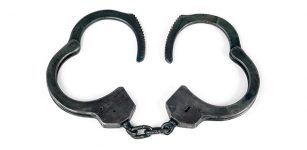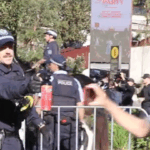Wrongly Imprisoned Man Released After 16 Years

30-year-old Los Angeles man Luis Lorenzo Vargas was convicted of sexually assaulting three women in 1999 after being loosely identified by the complainants – who said that the perpetrator had either one or two small tattoos of a teardrop running down his cheek.
Vargas maintained his innocence throughout the trial and time in prison, adamant that the real offender was still out there. His co-workers provided an alibi, but prosecutors had their eyes set on Vargas – arguing that his teardrop tattoo proved it was him. And the jury believed it.
He was sentenced a term of imprisonment of 55 years to life.
For 16 years, he anguished behind bars while his criminal lawyers lodged a series of unsuccessful appeals. But now, DNA evidence has established that he never committed the crimes in the first place.
The real attacker has never been caught, but he is believed to have sexually assaulted up to 39 women since 1995.
When the judge announced that he has been cleared, 46-year-old burst into tears, saying “I love you” to his mother who was in the courtroom with his daughter, now 26 years old.
Another Victory for the Innocence Project
Vargas was lucky enough to have his case reopened by the Innocence Project – an organisation with branches around America and other countries. Its aim is to acquit those who have been wrongfully convicted using DNA.
So far, the good work of the US Innocence Project has led to the exoneration of 333 innocent people, most of whom were black or Hispanic men convicted on the basis of a visual identification.
The project typically arranges for the retesting of archived exhibits such as swabs from the complainant’s body, pieces of clothing and weapons which could not be tested previously, in order to determine whether the convicted person could actually have been the perpetrator. A large number of samples have matched other known offenders or have otherwise categorically excluded the individuals who were convicted. But disturbingly, many of those exonerated had already spent significant periods in prison, and even on death row – with the average period served by those innocent inmates being 14 years. And since the project does not work on cases after a person’s death, there are suggestions that many falsely identified people have been executed despite being innocent.
In the case of Vargas, DNA was used to conclusively prove he could not be the man they were after. In light of this, the prosecution wrote to the judge saying they no longer had confidence in the conviction.
While it is heartening to see the Innocence Project reversing so many wrongs, it is tragic to know that they are happening in the first place.
His mother told the LA Times, “I still feel a lot of anger. This can’t happen to other people. It just can’t. It’s injustice.”
Wrongful Convictions in Australia
The reasons behind wrongful convictions are many: including flawed forensic evidence, misidentification or false confessions. But sometimes a wrongful conviction is the result simply of carelessness by the prosecution, or even abuses of process or malicious prosecutions.
In Australia, the Innocence Project has teamed up with Griffith University to help overturn wrongful convictions.
Their mission statement reads:
“By working to correct failures in our criminal justice system, we will foster an Australian legal culture that champions the defence of the innocent, and helps protect the marginalised and oppressed.”
Unfortunately, the Howard government withdrew all government to the Innocence Project during its time in office, and the Project is chronically underfunded.
Famous Australian examples of wrongful convictions including the Chamberlains, and the more recent case of Roseanne Beckett, are examples of murder convictions overturned years after innocent defendants were sent to prison. But while these are perhaps two of the most well-known cases, there are many more wrongfully convicted people, some of whom will probably never be acquitted.
And the steady removal of protections against wrongful convictions – including:
- The success of keeping criminal lawyers out of police stations through laws that remove the right to silence when a lawyer is present,
- The removal of the ‘presumption of innocence’ and reversal of the onus of proof for many criminal offences,
- Laws that prohibit criminal defence lawyers from accessing relevant materials in sexual assault cases, and
- The dangers of misuse of new meta data retention laws,
- The massive increase in police powers and lack of police accountability,
combined with:
- The popular belief that a person is likely to be guilty if charged by police,
- The absence of a right to legal representation,
- Cuts to Legal Aid and community funding, and
- Social prejudice against certain groups,
are certain to ensure that many more people are wrongfully convicted and sent to prison in the future.






